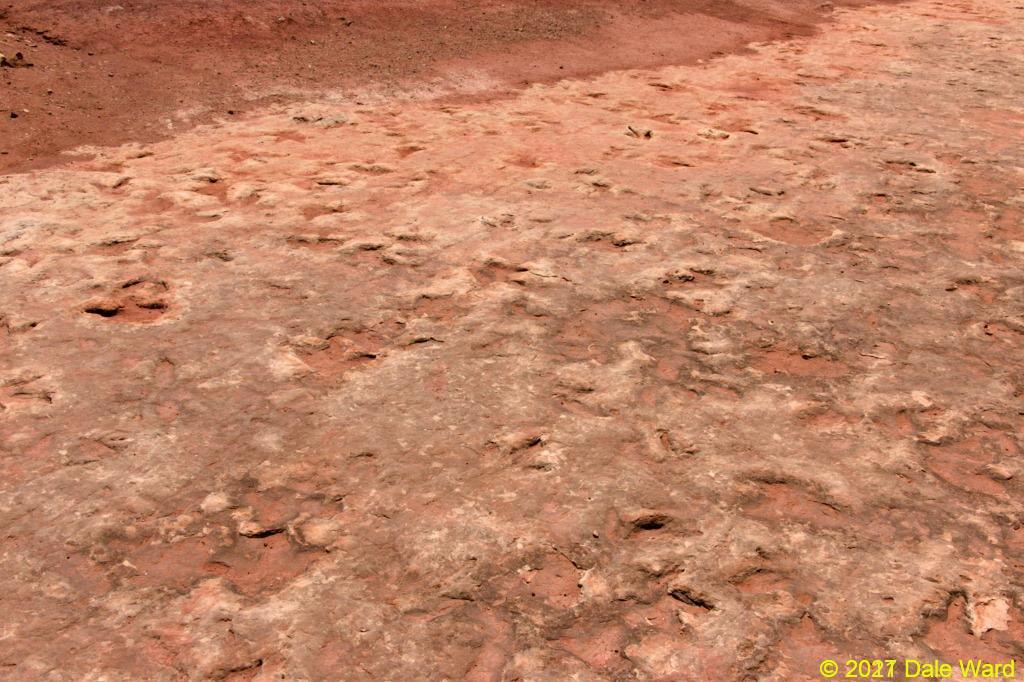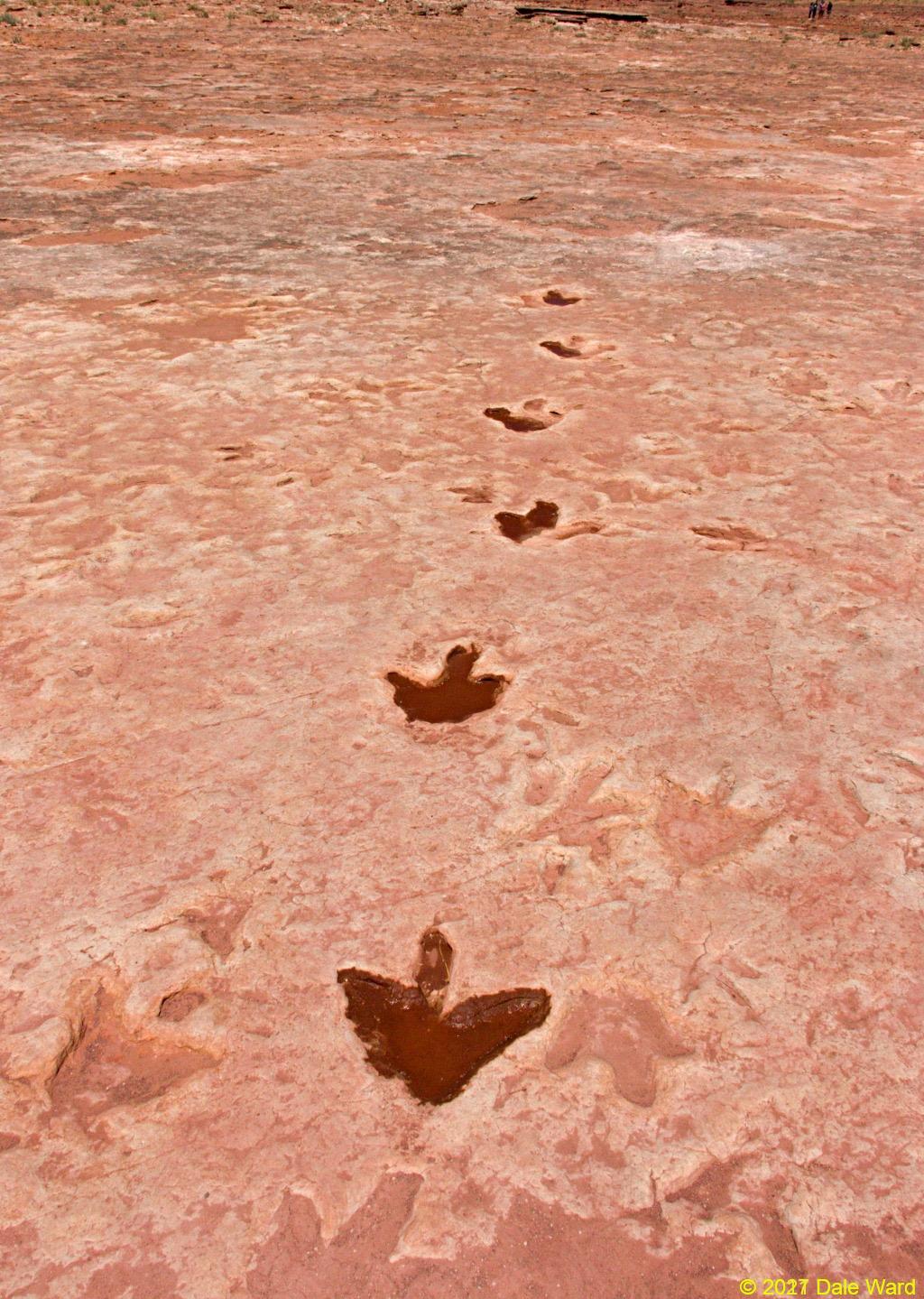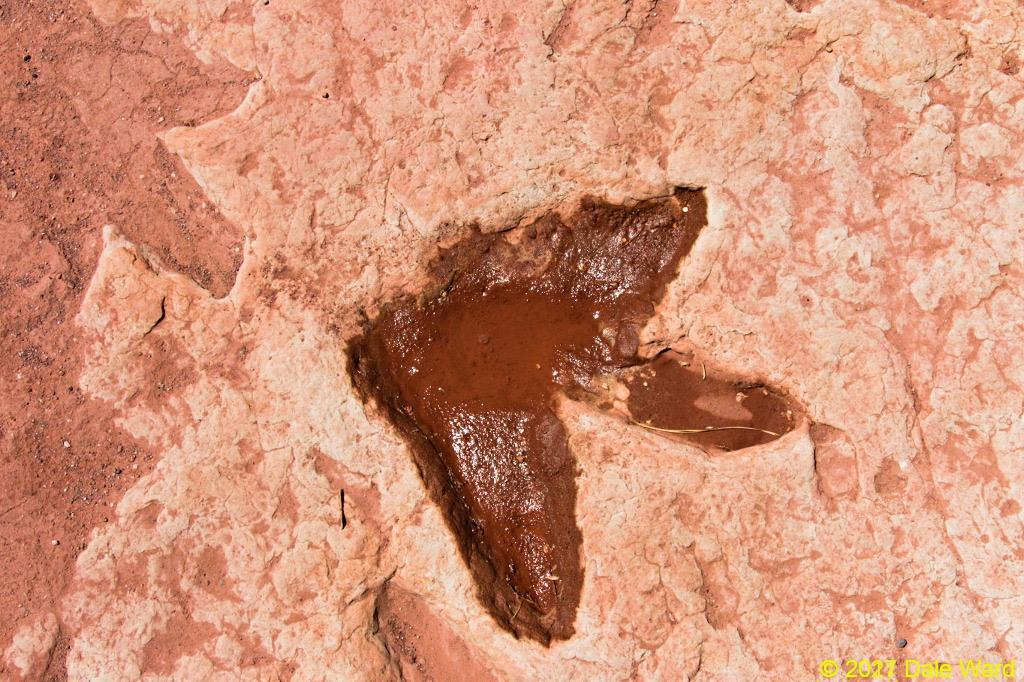Dinosaur Tracks at Tuba City
A visit to the Navajo Nation to see the Dinosaur Tracks at Tuba City, Arizona
 Landscape near the track site. It’s a spectacular and austere place.
Landscape near the track site. It’s a spectacular and austere place.
West of Tuba city, Arizona, on the Navajo Nation, the land is mostly a broken landscape of bare slick-rock. It shimmers in the heat in the summer, and stretches away in the distance to a couple of low mesas. I’m usually on my way to someplace else when I pass through here, and I’m usually in a hurry. So it’s always been ‘just scenery’ to me.
When I blast on through at 60 mph or so, I’ve seen glimpses of a spray-painted sign next to the highway. The sign looks almost like graffiti. It has as an arrow pointing off to the North, and says “Dinosaur Tracks”. I’ve always wondered what that was all about. So one day, on a whim, I turned off of the highway to check it out.
I thought I’d have to drive a long way to the track site, but the site was only a few hundred yards off the highway. There were a couple of stands set up, selling jewelry and such.
A very pleasant young Navajo lady came up to me and offered me a tour of the site. I agreed, and off we went.
The tracks were right there, no searching required. And they were spectacular, a dense swarm of intertwined and overlapping prints.
 There are a whole lot of dinosaur tracks at this site.
There are a whole lot of dinosaur tracks at this site.
The feeling was like when you stand next to a desert cattle tank and see the swarm of prints around it. You think, “Wow. What happened here last night.”
Except this tracks are about 200 million years old. Try to put this into perspective. Tyrannosaurus rex roamed the earth about 60-68 million years ago. So…we are closer in time to T. rex than T. rex was to the time these tracks were laid down.
That thought leaves me speechless.
From what I’ve read, the prints were left by a variety of bipedal carnivorous or scavenging dinosaurs, such as Dilophosaurus wetherilli or Coelophysis kayentakatae.
Dilophosaurus is the crested ‘spitting dinosaur’ from the movie Jurassic Park (to the best of my knowledge, there’s no evidence that they actually did spit). They seemed to be about 20-25 feet in length. I believe the first Dilophosaurus skeletons were found back in the early 1940s, from a site not too far from these tracks, -300x200 Coelophysis is the dinosaur whose fossils were so common on Georgia O’Keefe’s Ghost Ranch. Small world, huh?
My guide was kind enough to put some water into the prints, to make it easier to visualize a single animal’s track-way through the swarm of prints.
 An individual dinosaur’s tracks filled with water, showing its path.
An individual dinosaur’s tracks filled with water, showing its path.
The stride length on the tracks was variable, from a couple of feet to maybe 6 or seven feet.
 A single track in the sandstone, filled with water to make it more visible.
A single track in the sandstone, filled with water to make it more visible.
After looking at the tracks, I was able to speak with my guide’s father and grandmother for a little bit. It was a very, very pleasant experience.
I’m so glad that I stopped to look at this site. I got the chance to see a spectacular track site, have a near-religious experience, and speak with some truly fine people.
What’s not to like?